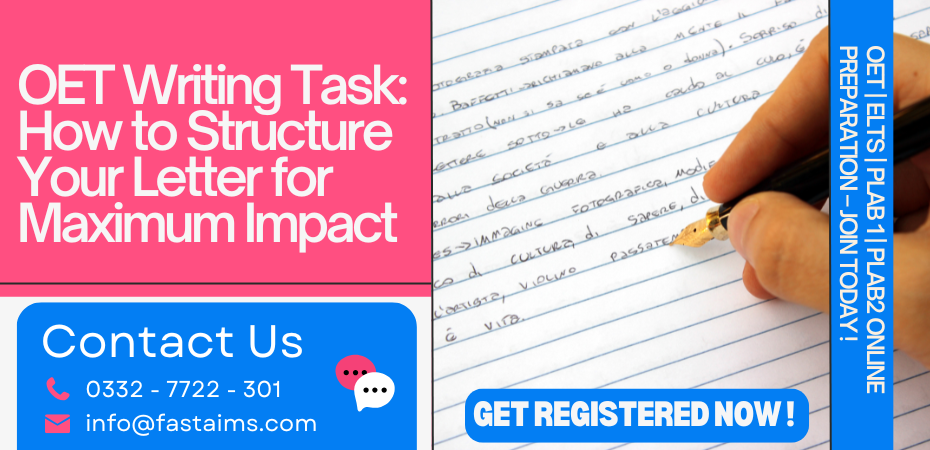OET for Dentists: What You Need to Know Before the Exam
Introduction
If you are a dentist aiming to work or study in an English-speaking country, passing the Occupational English Test (OET) is a crucial step in your journey. The OET is designed specifically for healthcare professionals and assesses your English language skills in a healthcare context. As a dentist, it’s important to understand the structure of the exam, how to prepare, and what to expect.
In this article, we’ll cover everything you need to know before the OET exam, from the structure of the test to effective preparation strategies tailored for dentists.
What is the OET and Why is It Important for Dentists?
The OET is an English language proficiency test designed specifically for healthcare professionals. It evaluates how well you can communicate in real-world medical settings, with an emphasis on English as it relates to patient care, treatment, and professional communication.
For dentists, the OET is essential for:
Obtaining licensure in English-speaking countries
Immigration purposes for working abroad
Demonstrating proficiency in the language used in dental practices
OET for Dentists: Why It’s a Crucial Step in Your Career
Passing the OET is not just a formality—it is a requirement for working in many English-speaking countries. Whether you plan to join a dental practice in the UK, Australia, or New Zealand, you will need to demonstrate a certain level of language proficiency, especially in healthcare-specific communication.
Understanding the OET Structure for Dentists
The OET consists of four sub-tests: Listening, Reading, Writing, and Speaking. Let’s break down what each of these involves and how they are specifically tailored for dental professionals.
Listening Sub-Test for Dentists
In the Listening sub-test, you will be required to listen to healthcare-related dialogues and answer questions based on what you hear. The test is divided into:
Part A: A consultation between a dentist and a patient (you will fill in missing details).
Part B: Short conversations between healthcare professionals (multiple-choice questions).
Part C: Presentations or interviews with healthcare professionals, such as discussing dental treatments or procedures.
Reading Sub-Test for Dentists
The Reading sub-test assesses your ability to understand healthcare-related texts. It includes:
Part A: Fast reading for key details, like medical histories and patient records.
Part B: Careful reading of workplace-related materials, such as dental reports.
Part C: Detailed reading, often including complex research articles or case studies relevant to dental practice.
Writing Sub-Test for Dentists
In the Writing sub-test, you will be asked to write a referral letter based on a set of case notes. For dentists, this involves accurately conveying medical information, including dental procedures, diagnoses, and treatment plans, in a clear and concise manner.
Speaking Sub-Test for Dentists
The Speaking sub-test involves two role-play scenarios:
Role-play with a patient: Explaining a dental procedure, giving aftercare instructions, or addressing a patient’s concerns.
Role-play with a healthcare professional: Discussing a case with a colleague or a specialist in a clinical setting.
OET Score Requirements for Dentists
What Scores Are Needed to Pass?
To be considered for dental registration in many countries, you typically need a Grade B (350 or higher) in each of the four sub-tests. However, specific score requirements may vary by country, so it’s important to check with the dental board or immigration authority of your target country.
Understanding the OET Grading System
Grade A: 450–500 (high proficiency)
Grade B: 350–449 (competent proficiency)
Grade C: 250–349 (minimum proficiency)
A Grade B in each sub-test is usually the minimum requirement for dentists.
Effective OET Preparation for Dentists
How to Set Up Your Study Plan
Assess your current level of proficiency in each skill (Listening, Reading, Writing, and Speaking).
Set a realistic timeline for preparation—ideally, 2 to 3 months of focused study.
Allocate specific time for each sub-test in your study schedule, balancing all areas equally.
Choosing the Right Study Materials
Use official OET study guides and resources provided by the OET website.
Choose study materials that include dental-specific vocabulary and practice tasks.
Utilize practice tests and sample questions from reputable OET prep books or websites.
Practicing with Sample Tests and Mock Exams
Take regular mock exams to assess your readiness. This will help you familiarize yourself with the exam format and time constraints. Practicing under timed conditions is key to improving your time management skills.
Time Management Tips for OET Exam Day
Allocating Time for Each Sub-Test
Listening: 40 minutes (stay focused and make quick decisions when listening to the recordings).
Reading: 60 minutes (use your time wisely—don’t linger too long on difficult questions).
Writing: 45 minutes (plan your writing first, then execute it in a structured manner).
Speaking: 20 minutes (stay calm, listen carefully, and respond with clarity).
Managing Stress and Staying Calm During the Exam
Stay calm by:
Deep breathing and taking short mental breaks if you feel overwhelmed.
Focusing on one sub-test at a time, and don’t dwell on mistakes.
OET Strategies for Dentists: Tips for Success
Listening Tips for Dentists
Focus on dental terminology in the listening tasks.
Practice listening to patient consultations or health-related podcasts.
Reading Tips for Dentists
Skim for key facts, especially in Part A and Part B.
Improve your ability to understand medical research papers and clinical documentation.
Writing Tips for Dentists
Focus on clear, concise writing—dental referrals should be easy to read and professional.
Use accurate medical terms and avoid vagueness.
Speaking Tips for Dentists
Practice explaining dental procedures to non-specialists (i.e., patients).
Simulate role-plays with a colleague or tutor to improve your communication skills in clinical settings.
Common Mistakes to Avoid in OET Preparation for Dentists
Overlooking Speaking and Listening Practice
While writing and reading are critical, don’t neglect speaking and listening practice. As a dentist, communication is essential, so practice both of these regularly.
Focusing Too Much on One Sub-Test
Ensure a balanced study plan. Don’t just focus on one area, especially writing and reading, which many candidates tend to prioritize.
Not Using Healthcare-Specific Vocabulary
Master healthcare terminology, particularly dental-specific words. The OET tests your ability to use professional vocabulary in context, so fluency is essential.
Best Resources for OET Preparation for Dentists
Official OET Study Guides and Practice Tests
Start with the official OET website for reliable practice tests, study materials, and sample case notes tailored for dentists.
Online Platforms and Mobile Apps for OET
To build a strong foundation for the OET exam, using the right tools is essential. FastAIMS offers an all-in-one online platform and mobile app tailored specifically for OET preparation.
With profession-specific vocabulary builders, real OET mock tests, interactive flashcards, and daily practice exercises, FastAIMS ensures healthcare professionals are fully prepared across all sub-tests. Whether you’re studying on a computer or mobile device, FastAIMS provides seamless, accessible learning anytime, anywhere.
Specialized OET Coaching for Dentists
Dentists preparing for the OET require a unique approach that focuses on clinical communication, dental terminology, and patient-friendly explanations. FastAIMS provides specialized coaching for dentists, offering targeted vocabulary training, practice tasks based on dental scenarios, and expert tutor feedback.
With FastAIMS, dental professionals get structured, high-impact OET preparation designed to boost scores efficiently and effectively.
Frequently Asked Questions (FAQs)
How Long Should I Prepare for the OET as a Dentist?
Generally, 2–3 months of preparation is recommended, but this can vary depending on your starting level of proficiency.
Can I Take the OET for Dentists Online?
Yes, OET is available in both paper-based and computer-based formats.
How Can I Improve My Speaking for the OET?
Regular practice with a tutor, role-playing patient scenarios, and focusing on clarity and professionalism are great ways to improve your speaking.
Conclusion: Preparing for OET Success as a Dentist
OET is your gateway to practicing dentistry in an English-speaking country. By preparing well and understanding the test structure, you can maximize your performance. Follow the strategies in this guide to ensure you excel in each sub-test, balance your study, and succeed in your OET exam.
Start your OET preparation today, and take the next step in your dental career!




